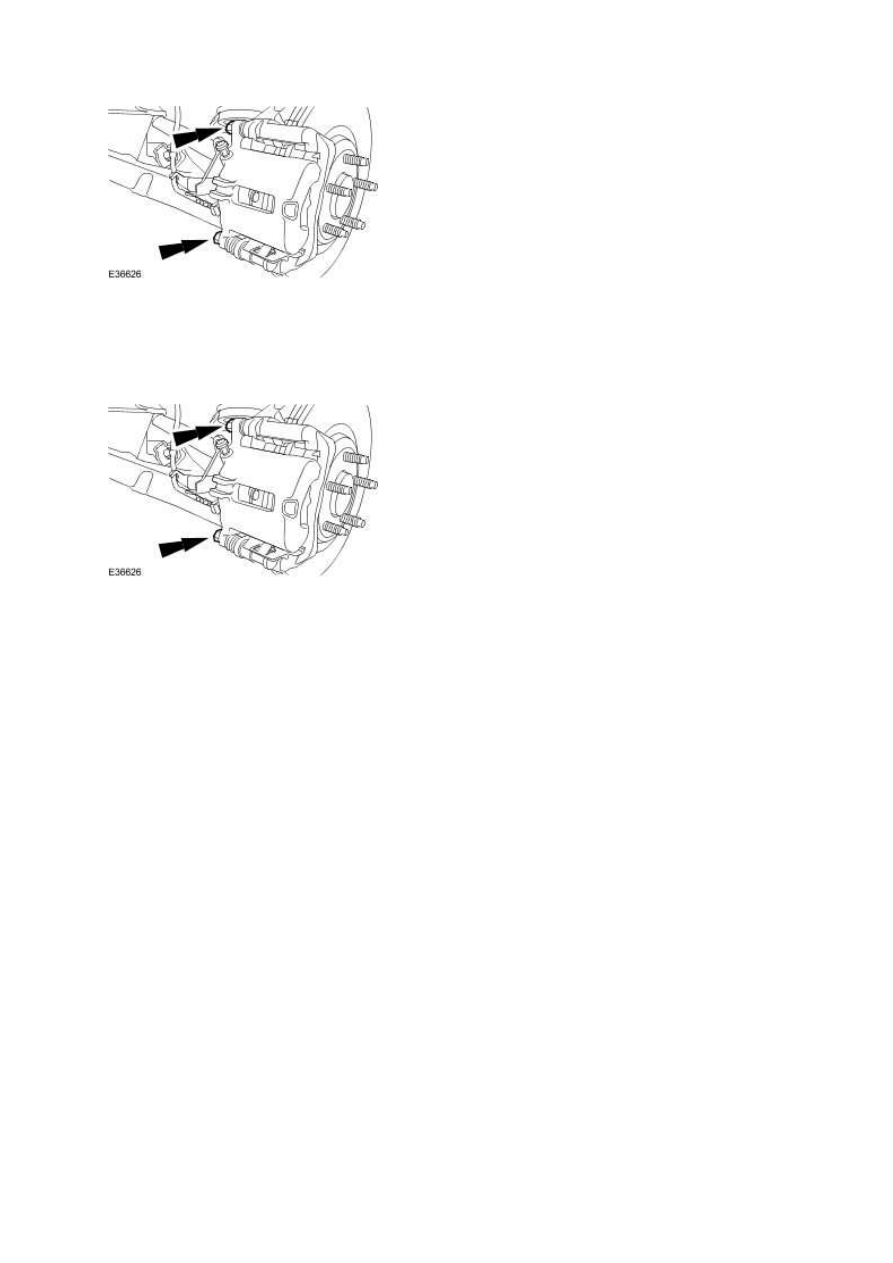Jaguar XJ (X350). Manual - part 154

9. Slowly apply the brake pedal until the piston is extended to the brake disc.
10. Detach the brake caliper from the anchor bracket.
11. Bleed the caliper.
•
Make sure the bleed tube is firmly attached to the bleed nipple.
•
Submerge the end of the bleed tube in a bleed jar containing a small quantity of
approved brake fluid.
•
Position the bleed jar base at least 300 mm (12 in) above the bleed nipple to maintain
fluid pressure and prevent air leaking past the bleed nipple threads.
•
Position the brake caliper with the piston facing down and the bleed nipple at the top.
•
Open the bleed nipple half a turn.
•
Using the special tool, fully retract the caliper piston.
•
Close the bleed nipple.
•
Repeat the above procedure twice.
•
Fill up the brake master cylinder reservoir to the MAX mark as necessary.
•
Continue to bleed the caliper using the above procedure until air-free brake fluid is
pumped into the jar.
•
Fully tighten the bleed nipple.
•
Make sure the piston grooves are aligned to fit the brake pad peg when the caliper is
assembled.
12. Install the outer brake pad.